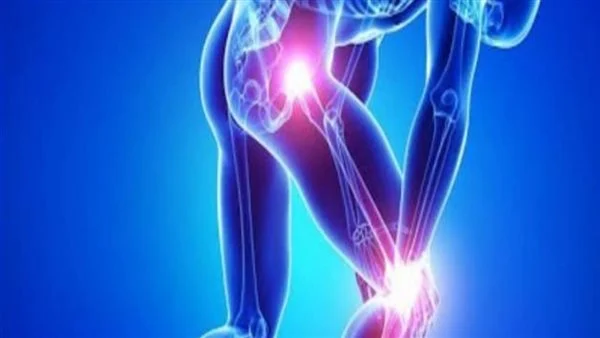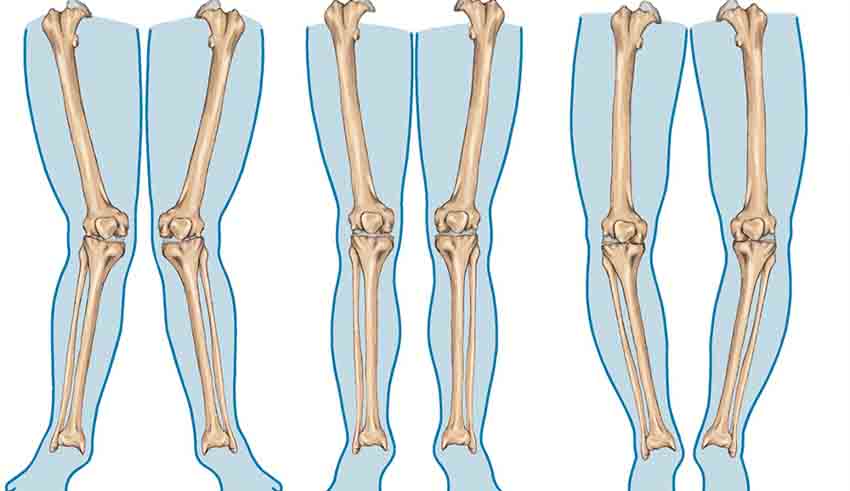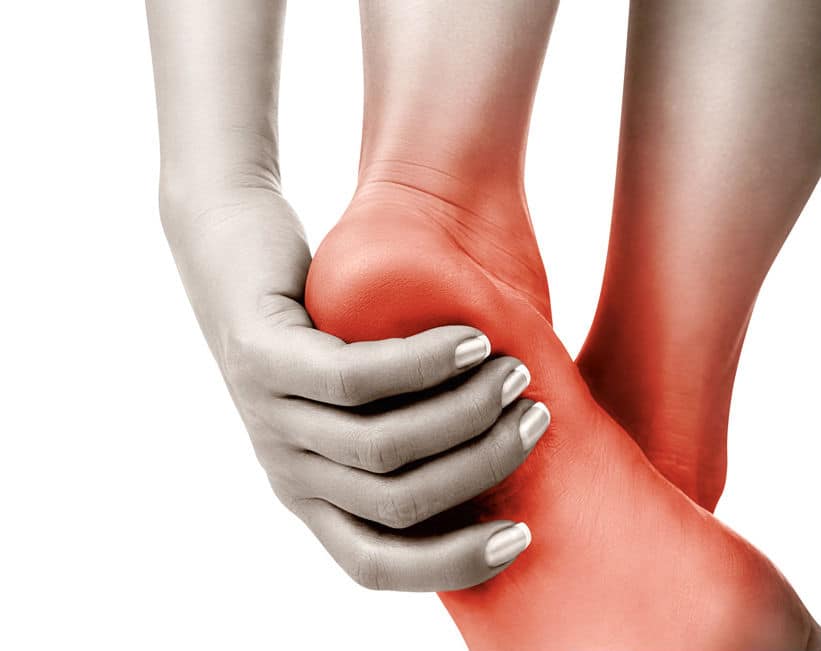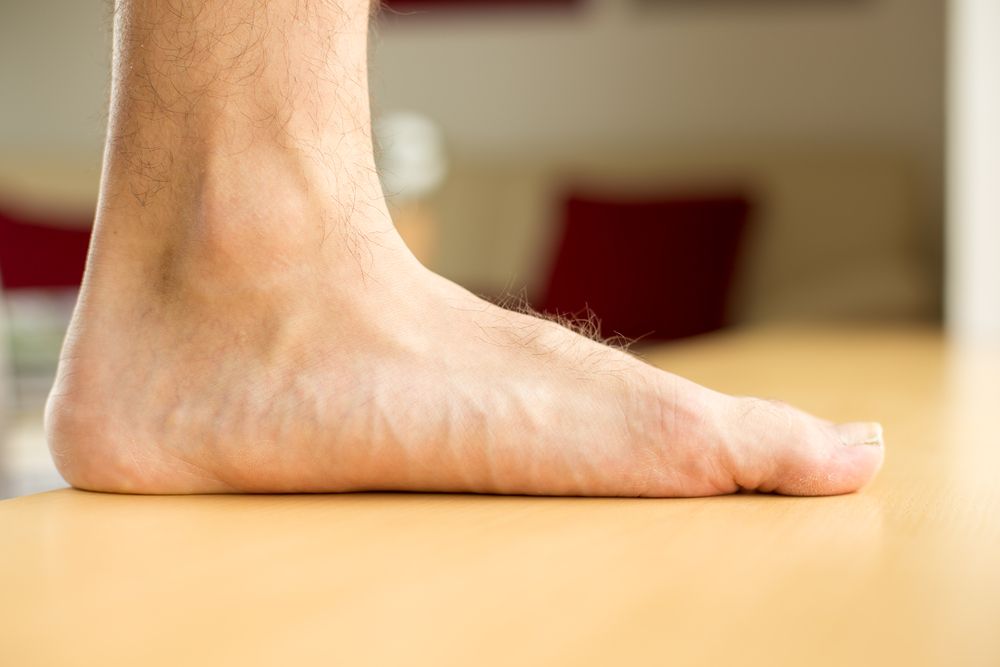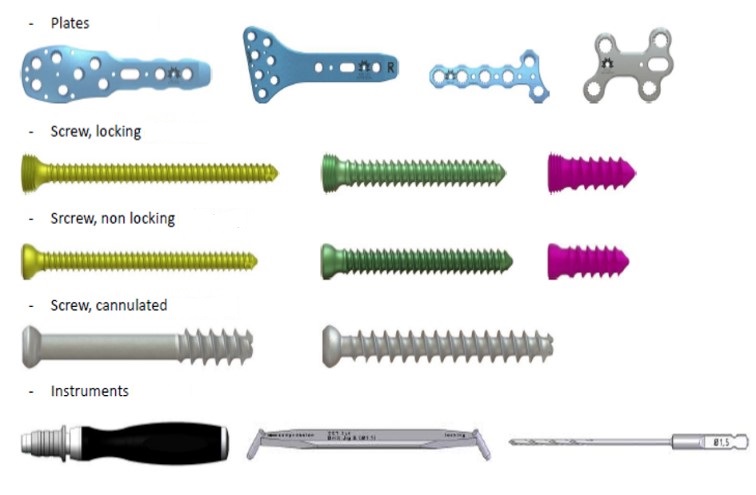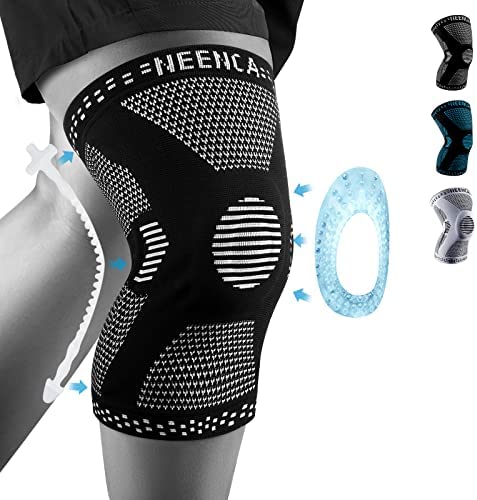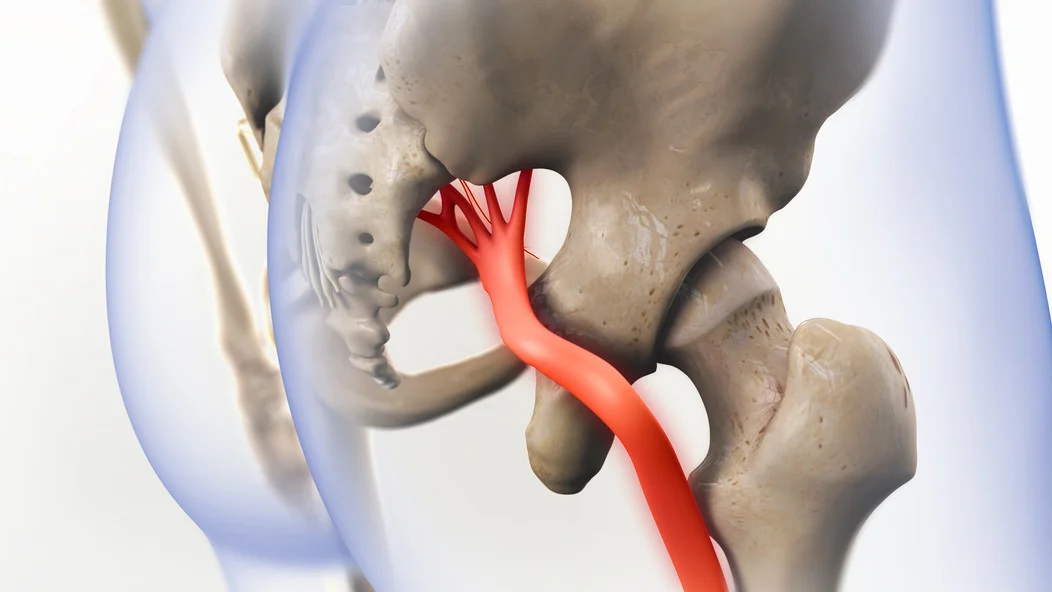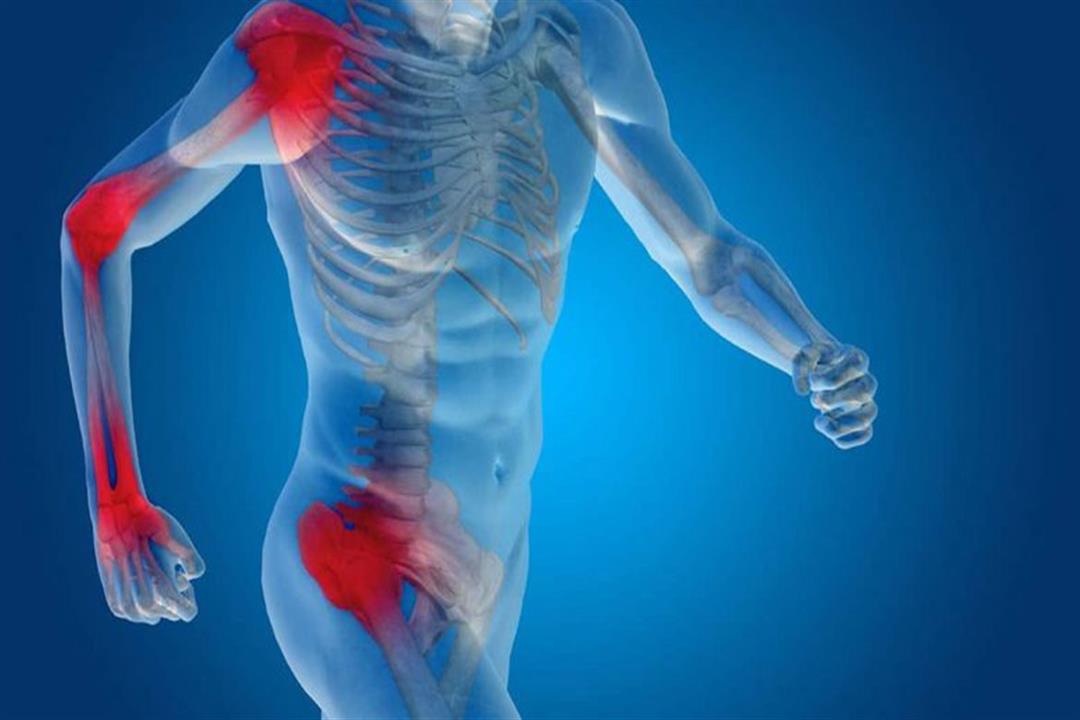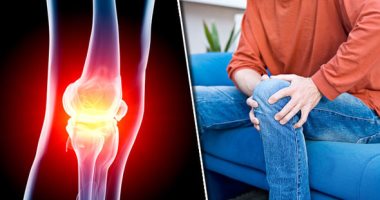What You Don’t Know About Sciatica and Its Risks?
Sciatica: What is Sciatica?
Sciatica nerves (sciatica) branch from the lower back through your hips and buttocks down to both legs. Sciatica means the pain that spreads along the path of the sciatic nerve.
- Causes of Sciatica: Sciatica occurs when a part of the nerve is under pressure or slips in the spine. Active people are less prone to sciatica than those who lead a sedentary lifestyle. Medical conditions affecting the body’s sugar consumption increase the risk of nerve damage and sciatica.
- Symptoms of Sciatica: Pain in the back, hips, buttocks, and legs. Loss of control over urination or defecation in severe cases. Available Treatments: In mild to moderate cases, sciatica can be treated with medication and appropriate physical exercises. In more severe cases, surgical treatment may be necessary.
- How to Prevent Sciatica: Practice daily exercise and maintain the strength of the back muscles. Avoid sitting for long periods and change sitting positions occasionally. Reduce excess weight to ease pressure on the spine.
- When to Seek Immediate Medical Care: In case of loss of control over urination or defecation. If symptoms are severe and cause weakness in the leg or changes in bowel or bladder function.
- General Tips for Maintaining Back Health: Ensure a healthy sitting posture and use appropriate back support. Regularly perform stretching and back muscle strengthening exercises. Avoid lifting heavy weights and sitting for long periods without movement.
Note that sciatica is a serious medical condition in some cases, so it is essential to consult a specialist for diagnosis and necessary treatment.
How Do I Know If I Am Suffering from Sciatica?
How to Know if You Have Sciatica? 5 Symptoms Indicating You Might Be Affected
Sciatica is a condition that causes sharp pain extending from the back to the toes, resulting from pressure on the nerve in the hip area or spine. If you are experiencing severe pain in your lower back that extends to your foot, you might be suffering from this common disorder. In this article, we will review 5 symptoms that indicate you have sciatica and necessitate a visit to the doctor.
- Severe Pain Extending from the Back to the Foot: One of the main signs of sciatica is severe pain spreading from the back down to the leg and foot. The pain may be confined to a specific area, such as the hip or thigh, or extend along the entire back of the leg.
- Tingling and Numbness in the Foot: Sciatica can cause tingling and numbness in the foot, affecting sensation and movement in this area. You may feel a constant burning or pins and needles sensation, which can intensify during physical activity or prolonged movement.
- Muscle Weakness: When there is pressure on the spinal nerve related to sciatica, you may experience weakness in the affected muscles. It might be difficult to perform activities that require strength in these muscles, such as running or standing for long periods.
- Difficulty in Performing the Physical Examination for Sciatica: The physical examination for sciatica is an important diagnostic tool, where the doctor evaluates symptoms, movement, and sensitivity in the lower extremities. If you find it difficult to perform certain movements or have severe pain during the examination, you might have sciatica.
- Numbness in the Bladder or Difficulty in Urination: In rare cases, pressure on the lower spinal nerve due to sciatica can affect bladder and urinary system functions. If you experience numbness in the bladder or difficulty in urinating, you should consult a doctor immediately.
If you experience any of these symptoms, you might be suffering from sciatica, and it is advisable to visit a doctor for an accurate diagnosis and appropriate treatment. The gynecologists at Mayo Clinic’s WebMD online clinic can assist you in diagnosing and treating sciatica. Do not hesitate to book a consultation appointment through the website.
How is Sciatica Treated?
Many people suffer from sciatica, characterized by pain and reduced movement in the back, buttocks, and legs. There are several methods used to treat this condition and alleviate pain and increase mobility, based on recommendations from certified doctors. In this article, we will shed light on the most important methods used in treating sciatica:
Exercises and Home Remedies:
- Engage in exercises that strengthen the muscles of the back, abdomen, and buttocks.
- Relax and breathe fresh air outdoors, which enhances the feeling of comfort.
- Use home remedies, such as applying hot compresses to the affected areas to alleviate pain.
Medications:
- Use medications prescribed by a specialist doctor, which include non-steroidal anti-inflammatory drugs and pain relievers.
- Topical creams and gels containing pain-relieving ingredients can be used.
Massage Therapy:
- Visit a specialist in therapeutic massage to relieve pain and relax muscles.
- Massage can increase blood flow and generally improve body movement.
Cupping:
- Cupping is an effective treatment for relieving sciatica pain without significant side effects.
- Special cups are placed on the skin and air is evacuated to create a suction effect on the muscles and skin.
Surgery:
- In severe and advanced cases, doctors may advise surgery to treat sciatica.
- The pressure on the affected nerve is reduced by removing part of the damaged cartilage or expanding the bone canal to alleviate symptoms.
Please note that it is important to consult a specialized doctor before implementing any treatment method for sciatica. Treatment may need to be adjusted based on the severity of the condition and its impact on quality of life.
What are the causes of sciatica?
Sciatica is a condition that causes pain spreading along the path of the sciatic nerve. Herniated disc is one of the most common and prominent causes of sciatica. However, there are also other reasons that can lead to this painful problem. In this article, we will review some different causes of sciatica.
- Herniated Disc: Herniated disc occurs when a part of the spinal disc protrudes and puts pressure on the nerve roots, thereby causing pain and sciatica.
- Inflammation of the Sciatic Nerve or Surrounding Area: Inflammation of the sciatic nerve or surrounding tissues can put pressure on the nerve, leading to sciatica symptoms.
- Spinal Stenosis: Spinal stenosis can occur due to natural deterioration of the spinal discs. This narrowing can put pressure on the sciatic nerve roots and lead to sciatica.
- Tumor in the Lumbar Spinal Canal: The presence of a tumor in the lumbar spinal canal can increase pressure on the nerve roots, causing sciatica symptoms.
- Cauda Equina Syndrome: This rare syndrome affects a bundle of nerves at the end of the spinal cord. It causes pressure on the sciatic nerve and leads to sciatica symptoms.
This is a brief list of some common reasons leading to sciatica. It should not be forgotten that there are other factors that may contribute to an increased risk of sciatica, such as aging. If you are experiencing symptoms of sciatica, it is advised to visit a specialized doctor for diagnosis and appropriate treatment.
Does sciatica pain increase at night?
Does suffering from sciatica pain increase at night? 5 tips to alleviate symptoms during sleep
Many people complain of sciatica pain, a condition that causes pain in the lower back area due to pressure on the irritated nerve in the spine. It is known that this pain persists throughout the day, but does it increase at night? In this article, we will take a look at the nature of sciatica pain at night and offer some tips for alleviating symptoms while sleeping.
- Choosing the Right Mattress: Sleeping on a soft mattress may increase pressure on the irritated nerve, exacerbating symptoms. Therefore, it is important to choose a medium-firm mattress that enhances sleep quality and maintains spinal alignment.
- Using Supportive Pillows: Placing a pillow beside the body can prevent tossing and turning during sleep, reducing pressure on the irritated nerve. Specialized pillows designed to alleviate nerve pressure can be added to enhance sleeping comfort.
- Adopting the Right Sleeping Position: The sleeping position can affect the severity of symptoms associated with sciatica. Sleeping on the back is considered the best position, while some may prefer sleeping on their side. Regardless of the chosen position, it is essential for the spine to be in a natural position to reduce pressure on the nerve.
- Practicing Suitable Exercises: Appropriate exercises can help strengthen the back and abdominal muscles, reducing pressure on the irritated nerve. It is advisable to exercise under the supervision of a specialized trainer and choose exercises suitable for your condition.
- Heat and Cold: Heat or cold can be used to relieve pain and swelling associated with sciatica. A heating pad can be placed on the back before sleeping to alleviate symptoms. Additionally, ice packs or cold packs can be used to reduce swelling in the painful area.
Sciatica pain may increase at night due to additional pressure caused by sleeping in unsuitable positions. To alleviate symptoms during the night, it is preferable to choose a suitable mattress, use supportive pillows, adopt the correct sleeping position, practice suitable exercises, and use heat and cold as needed. If symptoms persist and negatively affect sleep quality, it is advised to visit a doctor for an evaluation and consultation on appropriate treatment steps.
Does Sciatica Heal on Its Own?
Sciatica is a condition that causes pain in the lower back area of the body, extending from the back to the hip and leg. Although sciatica can be bothersome and painful, the good news is that in many cases it can heal on its own. In this article, we will take a look at the recovery duration for sciatica and how to deal with it.
- Rest and Avoid Aggravating Activities: During an episode, it is advisable to get enough rest to allow the affected sciatic nerve to heal. Avoid activities that may increase pain, such as standing or sitting for long periods, and try to avoid intense sports activities.
- Engage in Light Exercises: Once your condition improves and the pain begins to subside, you can start engaging in light and regular exercises. Among these beneficial exercises are walking, swimming, and hydrotherapy. These exercises enhance the strength and flexibility of the muscles and promote blood circulation in the affected area.
- Apply Self-Treatment: To reduce sciatica pain, you can use some methods that can be applied at home. Applying hot compresses to the painful area is helpful in alleviating pain and soothing inflamed muscles. An ice pack or a wrap with sea water rich in minerals can also be applied to the affected area to reduce inflammation.
- Medical Consultation: If the pain persists and symptoms worsen, it is advisable to consult a specialist doctor. The doctor may provide suitable treatments such as therapeutic massage, physical therapy, or pain relief medications.
Although sciatica may take a long time to fully recover in some cases, most people feel significant improvement within a short period of rest and self-care. It is important to monitor any changes in condition and listen to the body to assess recovery and ensure proper care when needed.
Does Walking Help Treat Sciatica?
Among the questions of sciatica patients is the search for the optimal treatment to alleviate pain, and here comes the role of walking. But is walking an effective solution for treating sciatica? In this article, we will explore the benefits of walking in treating sciatica and its impact on alleviating pain and promoting healing.
- Improving Blood Circulation: Walking is an effective activity for enhancing blood circulation in the body. This positively impacts the supply of blood and oxygen to the affected nerves, necessary for healing. Additionally, walking activates the blood vessels surrounding the affected nerve, helping to alleviate pain and promote nerve healing.
- Strengthening Muscles: Walking is a low-intensity exercise that strengthens muscles supporting the sciatic nerve, improving its stability and reducing its excessive movement and resultant friction. Strengthening these muscles can decrease irritation and inflammation in the nerve, contributing to improved symptoms and pain relief.
- Enhancing Flexibility and Elasticity: Walking improves flexibility and elasticity in the muscles and tissues surrounding the affected sciatic nerve. As flexibility increases, the pressure and tension on the nerve can be reduced, partially alleviating pain and contributing to a decrease in sciatica symptoms.
- Increasing the Release of Happiness Hormones: Studies have shown that walking and other forms of light physical exercise increase the secretion of hormones responsible for happiness and mental well-being. With a higher level of these hormones, pain perception can be reduced, and overall mood improved.
- Gradual Improvement in Endurance: Regular walking allows the patient to gradually improve their endurance and ability to walk for longer periods. Increased endurance can lead to enhanced daily activity and the ability to perform routine tasks without experiencing excessive pain and fatigue.
- Special Walkers: In some cases, special walkers may be an option used in treating sciatica. Special walkers work to reduce pressure and movement on the sciatic nerve, contributing to pain relief and improved mobility and walking ability.
Overall, walking is one of the essential physical activities for patients with sciatica. It is an effective and low-cost means of improving symptoms and alleviating pain. However, patients should consult their treating physician before starting any new physical activity or specific exercises. The doctor can provide necessary advice and appropriate guidelines for the individual’s condition.
What are the risks of sciatica?
- Increased Risk of Nerve Damage: People who sit for long periods or lead a sedentary lifestyle are more prone to sciatica compared to active individuals. Sciatica is a medical condition that affects how the body uses sugar and increases the risk of nerve damage. Therefore, you may experience pain and a numb feeling in the buttocks and legs.
- Complications of Sciatica: Sciatica occurs due to inflammation of the sciatic nerve and can cause various side effects and complications. The pain can be so debilitating that it hinders your movement and makes it difficult to get up from a chair.
- Common complications of sciatica include:
- Nerve Damage: Nerve damage may occur, causing weakness or loss of muscle and sensory strength in the affected leg. Weakness or Loss of Control Over Urination or Bowel Movements: In rare cases, sciatica may lead to weakness or loss of control over urination or bowel movements.
- Recurrence of Symptoms: Sciatica may recur, and symptoms can return after a period of recovery. Therefore, it is important to follow prevention tips and take necessary precautions to avoid irritating the affected nerve.
- Impact on Daily Life: Sciatica can be a burden on your daily life, limiting your ability to perform everyday activities normally. You may find it difficult to move around, sit for long periods, or engage in physical exercise.
- Need for Treatment: Although most people improve from sciatica spontaneously without the need for treatment, more severe cases may require intervention. Treatment can include pain-relief medications, physical therapy, and in some rare cases, nerve surgery.
- In general, individuals suffering from sciatica should be careful to assess their lifestyles and take steps to maintain regular physical activity and prevent prolonged sitting, smoking, and being overweight. If any troubling symptoms appear or the condition worsens, it is advisable to visit a doctor for evaluation and necessary treatment guidance.
What are the symptoms of sciatica in the left leg?
Sciatica is a common type of pain affecting the sciatic nerve, causing pain in the back, legs, and particularly in the left leg. Below is a list of some common symptoms of sciatica in the left leg:
- Pain: Sciatica pain can be severe and debilitating for some. The patient experiences varying intensity and location of pain, extending from the back area down to the left leg and foot.
- Accompanying Nausea: Sciatica often comes with a feeling of nausea. It is known that this feeling can disappear with rest or the use of ice, where it is advised to apply an ice pack to the leg for 20 minutes several times a day.
- Numbness and Tingling: Another common symptom of sciatica in the left leg is a feeling of numbness or tingling in the left leg. The patient may experience an abnormal sensation and numbness in the leg and left foot.
- Muscle Weakness: Sciatica in the left leg can be accompanied by muscle weakness, making it difficult for the patient to use the left leg with maximum strength. This muscle weakness can affect the individual’s ability to walk and perform daily activities.
- Radiating Pain: Sciatica in the left leg can result in radiating pain, where the pain extends along the sciatic nerve in the left leg, affecting muscles, nerves, and ligaments in the leg.
Note: Patients experiencing similar symptoms should contact a specialist for proper diagnosis and treatment. Always remember that the information mentioned here is for educational purposes only and should not be considered a substitute for consulting a specialist.
Is a back belt beneficial for sciatica?
- Reduces Pain: A back belt can be used to alleviate pain from recurrent sciatica episodes. The belt supports and stabilizes the lower back area, reducing muscle tension and associated pain. The belt can be worn throughout the day for continuous pain relief.
- Useful During Physical Activities: During a sciatica episode, a belt can be beneficial when engaging in physical activities such as gardening or exercising. The belt can reduce muscle strain in the back area and relieve pain during these activities.
- Not Suitable for General Back Pain: Although a back belt can be effective in relieving sciatica pain, it is not the best solution for general back pain. If there is pressure on the nerve roots or a problem in the vertebrae near the painful area, the belt may not be as effective as expected.
- For Temporary Use: It is advised to use a back belt for limited periods only and in moderation. The use of the belt should be part of a comprehensive treatment plan that includes practicing strong physical exercises and maintaining proper body posture.
- Consult Your Doctor: Before using a back belt for sciatica or any other pain condition, it is important to consult your doctor for an accurate diagnosis and specific guidance. Consulting a doctor helps determine potential risks and ensures the belt is used correctly and effectively.
The benefits of a back belt in relieving sciatica pain and improving the quality of daily life cannot be denied. However, it should be used cautiously and according to the guidance of a specialist. Consult your doctor before starting to use it and make sure to choose the right belt for your personal needs.
